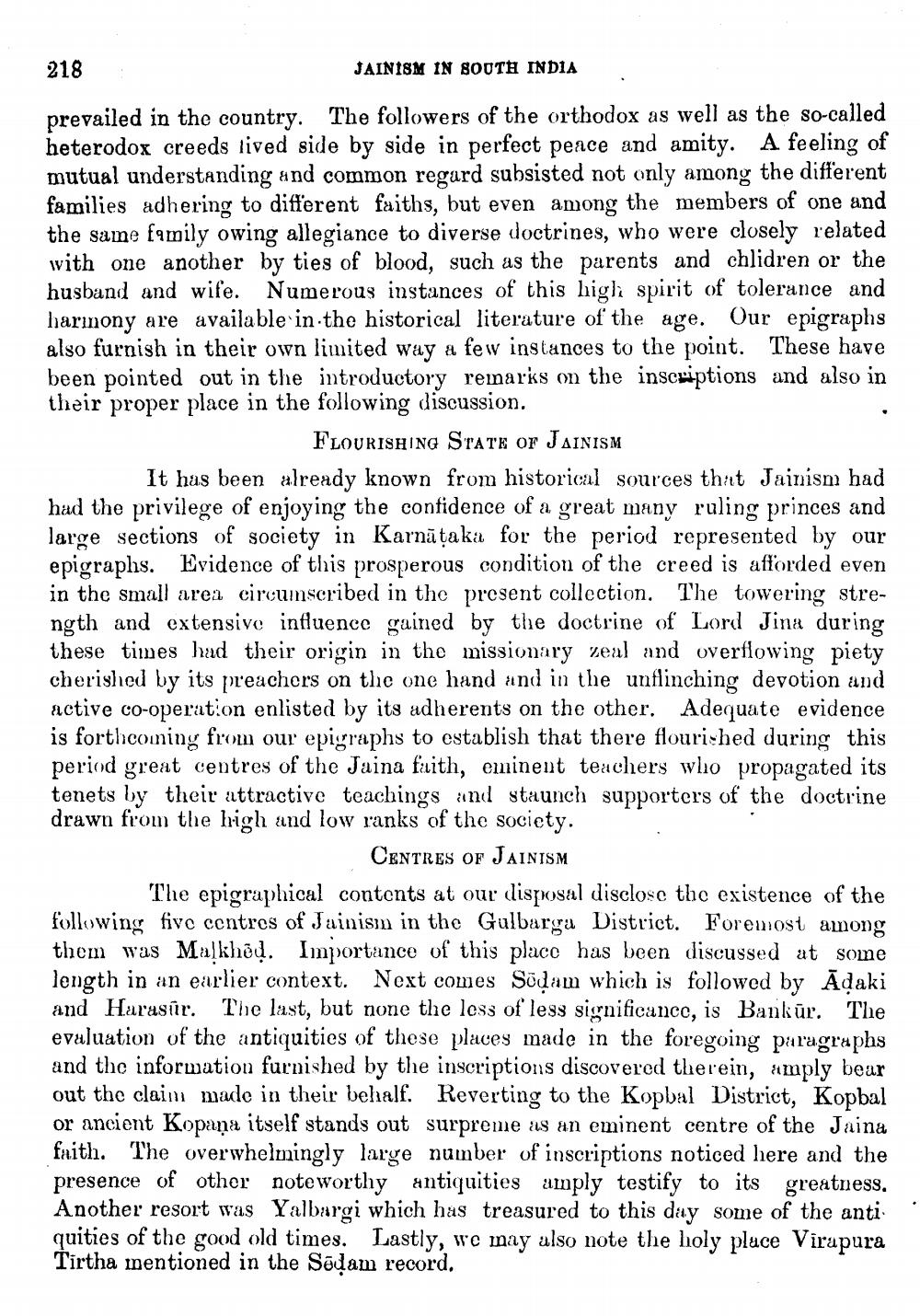________________
218
JAINISM IN SOUTH INDIA
prevailed in the country. The followers of the orthodox as well as the so-called heterodox creeds lived side by side in perfect peace and amity. A feeling of mutual understanding and common regard subsisted not only among the different families adhering to different faiths, but even among the members of one and the same family owing allegiance to diverse doctrines, who were closely related with one another by ties of blood, such as the parents and chlidren or the husband and wife. Numerous instances of this high spirit of tolerance and harmony are available in the historical literature of the age. Our epigraphs also furnish in their own limited way a few instances to the point. These have been pointed out in the introductory remarks on the inscriptions and also in their proper place in the following discussion.
Flourishing State of Jainism It has been already known from historical sources that Jainism had had the privilege of enjoying the confidence of a great many ruling princes and large sections of society in Karnāțaka for the period represented by our epigraphs. Evidence of this prosperous condition of the creed is afforded even in the small area circumscribed in the present collection. The towering strength and extensive influence gained by the doctrine of Lord Jina during these times had their origin in the missionary zeal and overflowing piety cherished by its preachers on the one hand and in the unflinching devotion and active co-operation enlisted by its adherents on the other. Adequate evidence is forthcoming from our epigraphs to establish that there flourished during this period great centres of the Jaina faith, eminent teachers who propagated its tenets by their attractive teachings and staunch supporters of the doctrine drawn from the high and low ranks of the society.
CENTRES OF JAINISM The epigraphical contents at our disposal disclose the existence of the following five centres of Jainism in the Gulbarga District. Foremost among them was Malkhöų. Importance of this place has been discussed at some length in an earlier context. Next comes Sodam which is followed by Ādaki and Harasir. The last, but none the loss of less significance, is Bankūr. The evaluation of the antiquities of these places made in the foregoing paragraphs and the information furnished by the inscriptions discovered therein, amply bear out the claim made in their behalf. Reverting to the Kopbal District, Kopbal or ancient Kopana itself stands out surpreme as an eminent centre of the Jaina faith. The overwhelmingly large number of inscriptions noticed here and the presence of other noteworthy antiquities anply testify to its greatness. Another resort was Yalburgi which has treasured to this day some of the anti quities of the good old times. Lastly, we may also note the holy pluce Virapura Tirtha mentioned in the Sõdam record.




